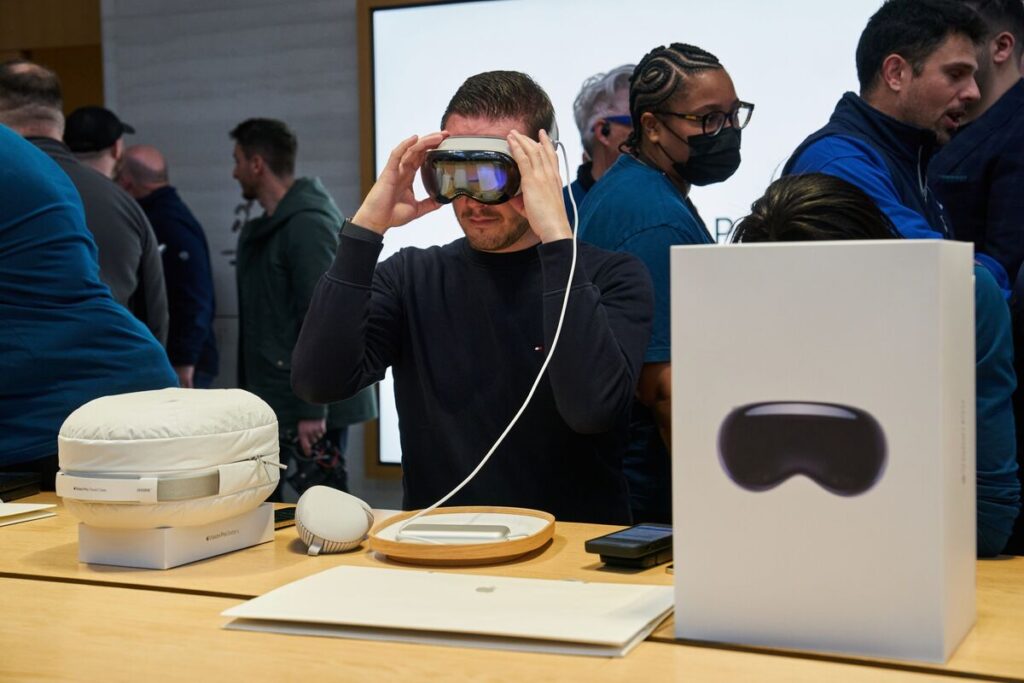February 18, 2024 at 1:45 PM GMT
The Apple Vision Pro, on the market for two weeks, is seeing some of Apple’s most loyal customers opting to return the device and reclaim their $3,500. Additionally, Apple bids farewell to its longest-serving product designer, while making strides in its generative AI efforts.
The Starters

A customer trying the Vision Pro at an Apple store.Photographer: Bing Guan/Bloomberg
Apple Inc. appears to be at least 18 months away from introducing a second-generation Vision Pro, and for many users, that may feel like a considerable wait given the initial response to the first version.
Since its launch on Feb. 2, it’s evident that the mixed-reality headset is still a work in progress. Despite impressive demonstrations and generally favorable reviews, using it daily presents challenges. The device’s weight, interface inconsistencies, and the steep price tag of $3,500 or more are hard to overlook.
Supporters of the Vision Pro emphasize that the current model is only the beginning and will improve over time. They point out that early iterations of iconic Apple products like the iPhone, iPad, and Apple Watch also had their share of issues. They suggest that discomfort from the weight or the narrower field of view is to be expected in a first-generation device.
While Apple’s earlier products faced their own set of challenges, complaints about them being cumbersome or too expensive were relatively rare.
Even some of Apple’s most loyal customers have reconsidered their purchase of the Vision Pro. By the end of the two-week return window for initial purchases, a notable number of headsets had been returned.
Returns are typical, but the Vision Pro’s return rate is noteworthy. Considering that purchasers are likely diehard Apple fans or early technology adopters, the return rate is higher than what one might expect for typical Apple products.
Apple hasn’t disclosed the return rate for the Vision Pro, but data from retail sources suggests it falls somewhere between average and above average, varying by location.
Apple is actively seeking feedback from customers who return the Vision Pro. Retail staff are probing reasons for returns, and each return is reported to management for potential insights to be relayed to headquarters in Cupertino, California.
Reasons for returns include the device’s weight, discomfort, lack of compelling applications and video content for its price, limited productivity gains compared to using a traditional external monitor, excessive glare, narrow field of view causing eyestrain, and the device’s isolating nature in shared experiences due to its precise fit requirements.
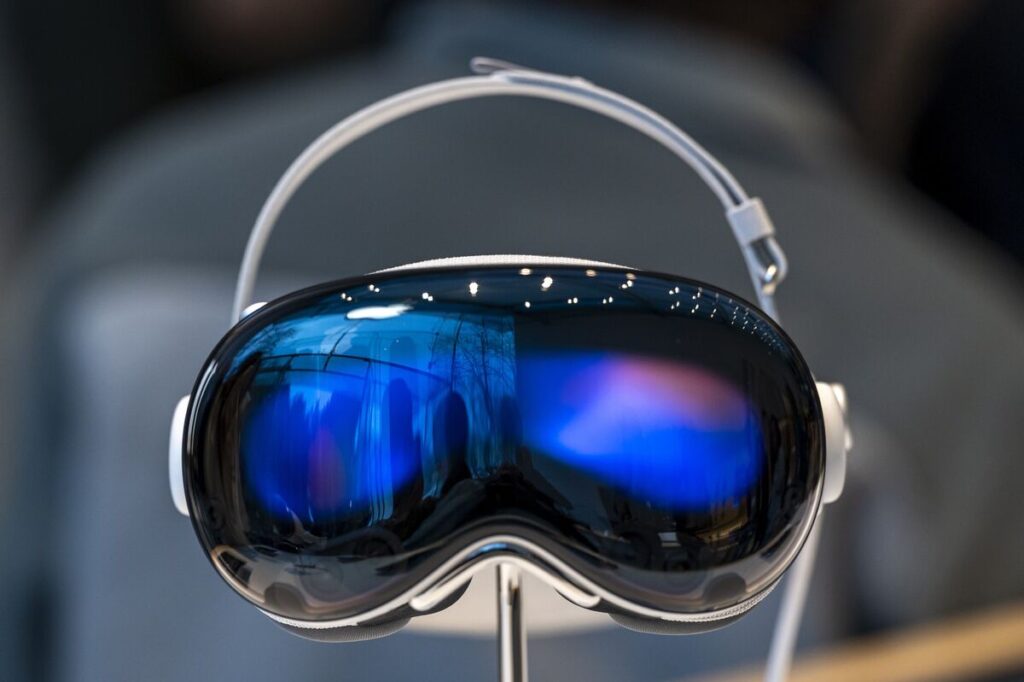
The Vision Pro.Photographer: David Paul Morris/Bloomberg
The individuals I interviewed were either long-standing enthusiasts of Apple and technology, known for purchasing new iPhones, iPads, and Macs upon release, or they were deeply impressed by the demonstrations held at Apple retail stores. As I mentioned in a previous article, these demonstrations are crafted to astound users with meticulously selected experiences.
From what I’ve observed, these demos have been remarkably effective — perhaps excessively so. They entice consumers with an experience that isn’t fully realized yet. Some stores are witnessing conversion rates of 10% to 15% following demos, an impressive figure considering the Vision Pro’s hefty price tag.
Chucky Blalock, who operates amusement businesses in Florida, purchased the device for home entertainment and hoped it would aid his business operations. While he found the technology and screens “unbelievable,” he ultimately felt disconnected from the world while using the Vision Pro. “I feel it is so important to be in the moment and the device doesn’t allow you to be,” he remarked.
Others highlighted the absence of a standout application for the Vision Pro. Randy Chia, a product manager at an investment firm in Los Angeles, returned the device after experiencing discomfort, exhaustion, and encountering buggy software. Despite being an early adopter of Apple products, Chia felt that the Vision Pro was “a bridge too far,” citing it as the buggiest first-generation product he had encountered.
Binyamin Goldman, founder of BZG Apps and an avid Apple enthusiast, purchased the device to explore app development possibilities. However, he found it too heavy and criticized the video passthrough feature for its low resolution. While he regretted returning it, Goldman deemed it unsuitable for the tasks Apple promoted it for.
Westin Flower, an online retail business owner, anticipated that the ability to organize multiple app windows would enhance his productivity. However, he was disappointed by the Vision Pro’s limited multitasking capabilities and struggled with eyestrain. “I don’t want to make compromises for $3,500,” he stated.
Jesse Dacri, a freelance cinematographer in California, echoed concerns about eyestrain and found the device excessively heavy, despite owning a Quest headset from Meta Platforms Inc. He conducted a comparative test with his Quest and concluded that the Vision Pro was too burdensome for extended use.
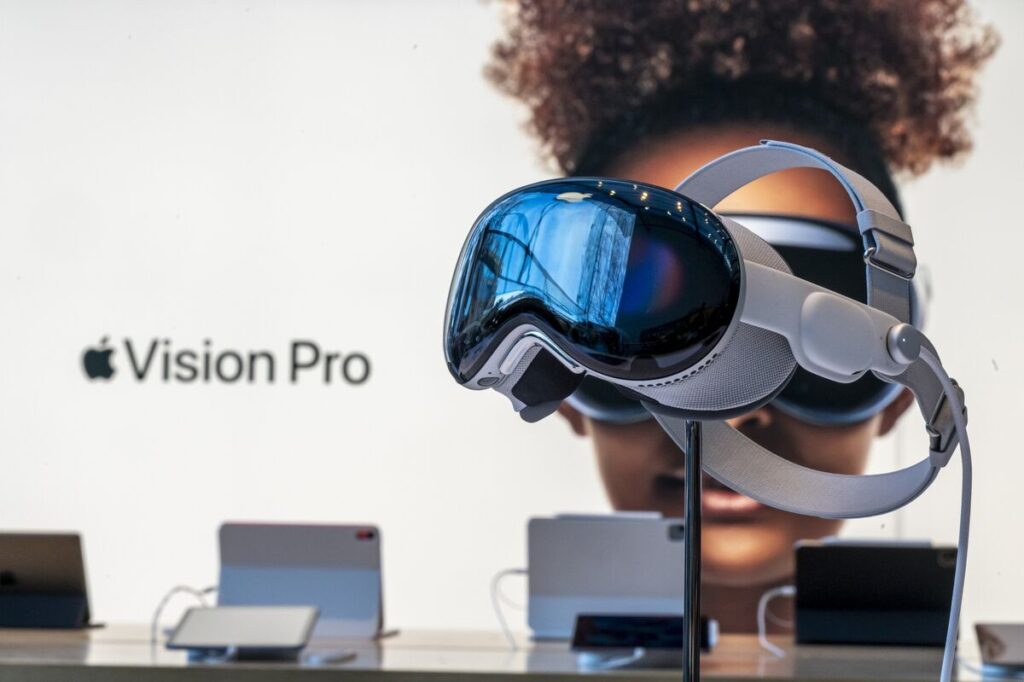
The Vision Pro.Photographer: David Paul Morris/Bloomberg
Narinder Walia, an economic consultant based in Los Angeles, marveled at the exceptional video quality of the device. “First off, I loved it. It was bananas,” he exclaimed. He enjoyed watching two movies on the device and believed that no other video experience could compare. However, he admitted that he didn’t utilize it for much else. “If the price had been $1,500 to $2,000, I would have kept it just to watch movies, but at essentially four grand, I’ll wait for version two,” he remarked.
Similarly, Farzad Mesbahi, a former Tesla Inc. supply chain manager in Texas, was impressed with the device but eventually returned it. He acknowledged that Apple had created a headset that didn’t induce dizziness and effectively combined hardware and software expertise. However, he felt that it wasn’t worth the high price. “It clearly is the future — but there’s not enough stuff for it to do right now,” Mesbahi commented. He found the device comfortable enough but noted that prolonged wear became burdensome.
David Altizer, a YouTube thumbnail designer from Nashville, had hoped to use the Vision Pro as an external monitor while traveling but found it too uncomfortable and incompatible with his workflow. “I live in Photoshop all day, so I don’t need a crazy-fast computer but I do need a color-accurate display,” he explained. “The whole experience felt really slow and not that sharp.”
Parker Ortolani, a product manager at Vox Media, had a particularly disappointing experience with the device. He found it uncomfortable due to its weight and ineffective straps. Despite attempts to adjust the fit, he couldn’t find a solution. Moreover, he experienced medical issues like eyestrain and a popped blood vessel in his eye, which he attributed to the headset. Despite his love for Apple products, Ortolani reluctantly returned the Vision Pro, considering it more of a prototype for developers than a consumer product.
Despite such experiences, there are plenty of users who adore their Vision Pros and wouldn’t part with them. In fact, the author of this column wrote the entire piece on their Vision Pro and intends to keep it.
The Bench
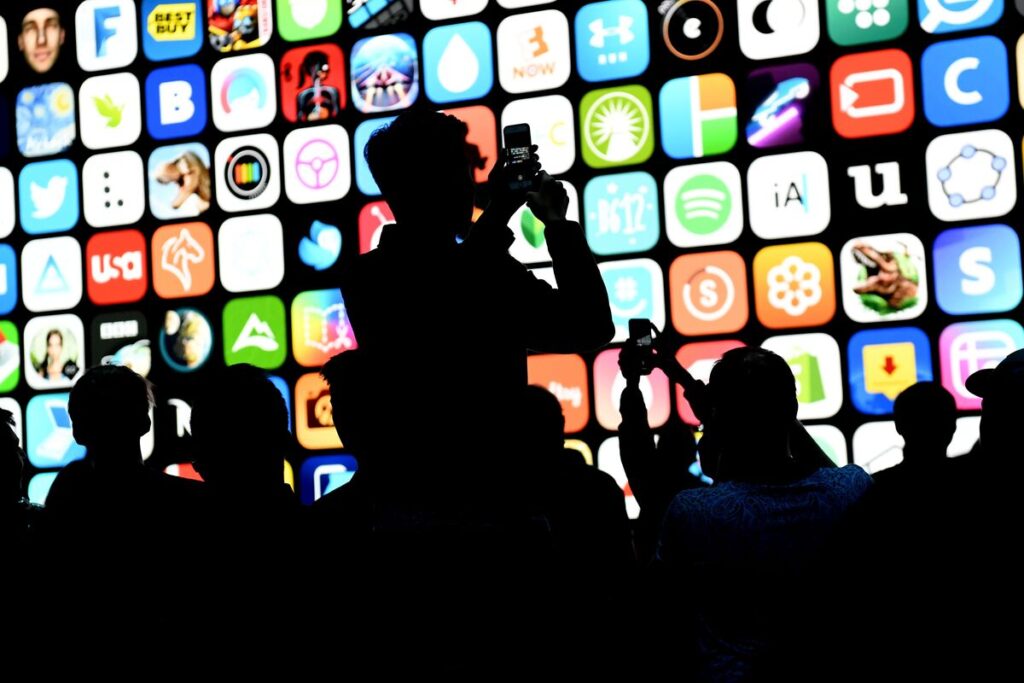
Attendees at Apple’s Worldwide Developers Conference.Photographer: David Paul Morris/Bloomberg
Apple is advancing its efforts in generative AI technology to streamline app development. One of the primary applications of generative AI at Apple is to expedite software development processes, both internally and externally. As previously mentioned in Power On, the company has been integrating large language models into Xcode for several months. Now, Apple is actively testing AI tools with its own staff, a practice known as “dogfooding,” to ensure their effectiveness before potential release to external developers, possibly as early as the Worldwide Developers Conference in June.
The AI capabilities integrated into Xcode aim to assist programmers in completing code lines or blocks efficiently and auto-generating programs for testing applications’ functionality. Looking ahead, Apple plans to expand the use of generative AI across iOS 18 to benefit consumers. This may involve introducing new tools to enhance productivity apps, content services, and search functionalities within the iOS ecosystem. Further details on these initiatives are expected to be revealed in the near future.
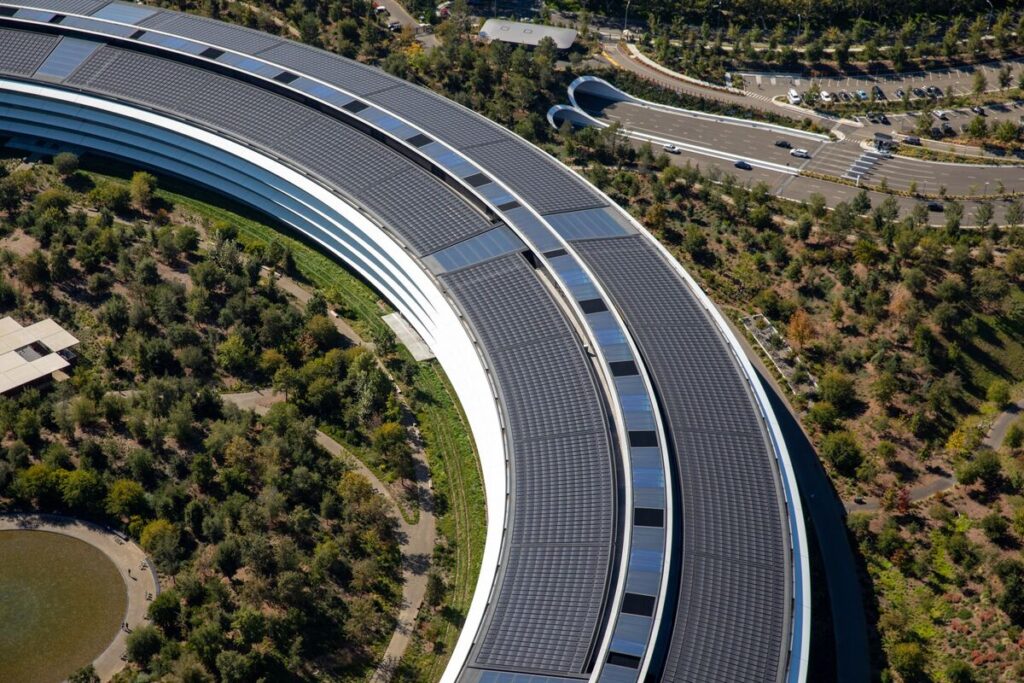
The Apple Park campus in Cupertino.Photographer: Sam Hall/Bloomberg
After 32 years, Apple bids farewell to its longest-serving industrial designer as he enters retirement. The departure underscores a significant evolution within the company’s industrial design team since the era of Jony Ive, marking what some describe as an exodus. This description seems fitting considering that 18 out of 23 (78%) team members have departed, with many choosing to follow Ive to his new venture, LoveFrom.
The most recent exit is Bart Andre, who joined Apple in 1992, coinciding with Ive’s arrival. While Andre has announced his retirement to colleagues, the outcome remains the same: Apple loses another veteran from its esteemed era of design. Over the past three decades, Andre has left an indelible mark on nearly every product release and is renowned as one of the company’s foremost patent holders. In his most recent role, he collaborated closely with Apple’s other longstanding designer and Chief Operating Officer, Jeff Williams, in leading the design team.
The Schedule

Apple Chief Executive Officer Tim Cook.Photographer: David Paul Morris/Bloomberg
On February 28th, Apple held its Annual Shareholder Meeting. While the significant announcement for this year’s assembly had already been made last month: longtime directors Al Gore and James Bell would not seek reelection due to reaching the age limit of 75. Typically, these meetings are not contentious occasions. Apple typically utilizes the event to review its product releases from the previous year, and Chief Executive Officer Tim Cook addresses investors’ questions. Regarding shareholder proposals, investors typically adhere to the company’s recommendations, which often include approving executive pay.

